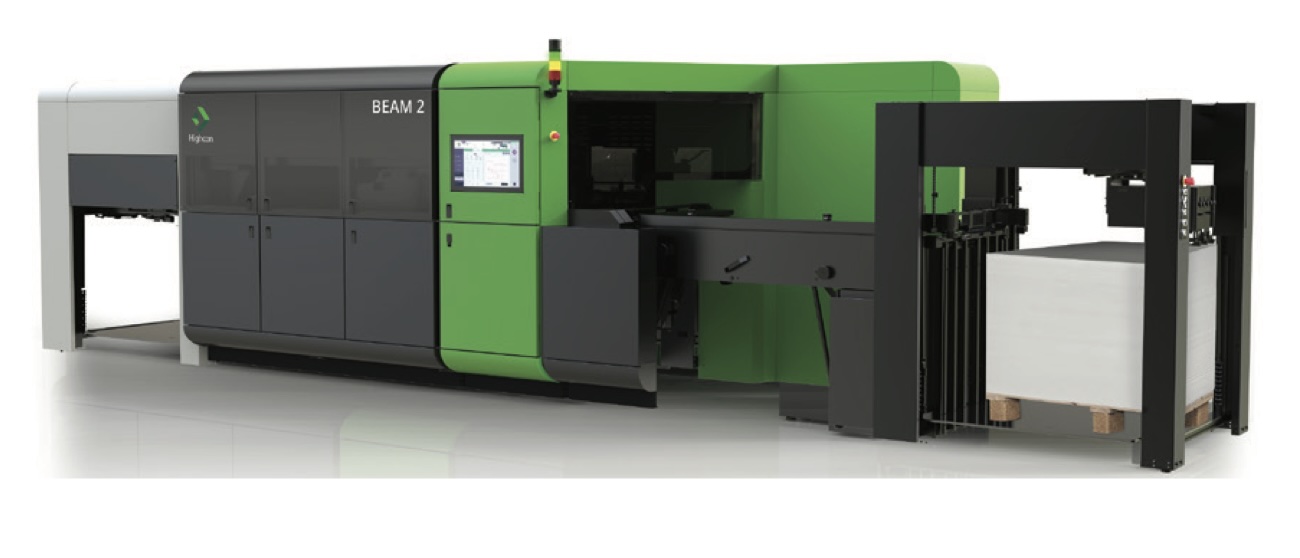Exploring the Advantages of Digital Die Cutting for Converters
- Published: March 28, 2024
By Simon Lewis, VP Marketing and Strategy, Highcon Systems Ltd.

Due to the challenging landscape of 2023 — marked by soaring interest rates, supply chain disruptions and global economic uncertainty — various industries, including packaging, are faced with difficult challenges. The packaging industry, having witnessed a decline in demand last year and expected to face ongoing challenges in 2024, suffers from ongoing shortage of skilled labor, supply chain disruptions and evolving demands for product innovation and sustainability.
To address these persistent challenges and foster growth in 2024, folding carton and corrugated packaging converters should consider strategies beyond conventional technology. One promising solution is digital die cutting, a transformative technology that offers an alternative to traditional die cutting with a fully digital workflow.
Leveraging Digital Die Cutting Technology
Manufacturers are increasingly turning to digital die cutting to improve agility, efficiency, turnaround times and sustainability. This technology provides high flexibility in batch sizes and delivery times, enabling cost-effective production of short runs, without minimum order quantities (MOQs). As a tooling-free solution, it eliminates the waiting time and cost associated with conventional dies, contributing to a more agile and sustainable approach.
Unlike traditional dies, digital die cutting doesn’t require wood, metal or rubber, minimizing material costs and time. The absence of the need for transport and storage further enhances efficiency and sustainability. Additionally, the laser cutting process can handle even the finest or most complex patterns, opening up new design possibilities not achievable through conventional means.
Navigating the Complexities of 2024
As the packaging industry confronts economic complexities, embracing digital die cutting emerges as a strategic move for 2024. Insights from folding carton and corrugated converters in the packaging and display industry, shed light on how digital die cutting is helping them navigate current industry trends.

Lower MOQ, Less Inventory and Less Obsolescence
In response to ongoing economic uncertainty, companies and brands are strategically reducing their inventory levels of packaging, driven by the anticipation of swift and efficient procurement through the ordering of smaller batches with expedited delivery. The BoxMaker in the United States is using digital die cutting systems to meet this increasing demand.
“We’re seeing now, some of our largest customers finally willing to pay more per unit, to have a lower MOQ, less inventory and less obsolescence. We’ve been selling this concept for a long time because of digital production but we’re now seeing Fortune 100 customers suddenly coming and saying, ‘You know that thing that you’ve been talking to us about for a couple of years? We want to do it tomorrow. Not a month or a year from now, but tomorrow,” said Richard Brown, president and co-owner, The Box-Maker. “If these large corporations are starting to take that approach, it’s going to trickle down.”
Sustainability
Reducing carbon emissions, waste and the quantity of material used are imperative in modern business today, demanded by consumers and brands alike. Linney in the UK saved 92 tons of wood, metal and rubber by using digital die cutting and creasing solutions, reducing carbon emissions and waste in the first 18 months after installation. The environmental impact is substantial, equivalent to 35 flights from London to New York and preserving two and a half football fields of rainforest.
Continued SKU Proliferation and Product Development
Virtual Packaging in Texas uses digital die cutting to support customers in packaging development and pilot volumes, anticipating increased product development across industries. “Whether you’re retrofitting your packaging, or you’re coming out with new packages or new lines and new packaging in general, we’ve seen an uptick in the last six months. I think it’s here to stay,” said Jordan Patterson, vice president, Virtual Packaging.
Differentiation to Stand Out
Heuchemer Packaging in Germany uses digital die cutting for consumer engagement and increased sales.
“This is reflected in a higher price point, as customers recognize the value in packaging tailored to their needs. Even with a simple brown material, our use of laser cutting introduces attractive elements, adding distinctive twists to the exterior,” said Sophie Heuchemer, co-owner and director of R&D, Heuchemer Verpackung.
Labor Shortages
Digital die cutting is designed to be simple and intuitive, address labor shortages by enabling inexperienced operators to quickly learn, ramp-up and deliver superior performance. Shortly after Thimm Všetaty completed its ramp up digital die cutting process, Plant Manager Kamil Masek said the equipment is running three shifts, adding that the system is used for short runs, special products and even jobs that would normally be produced on analog.
However, due to tooling taking time, they are produced on the digital die cutting system.
As digital die cutting reshapes the packaging industry, the experiences of industry veterans highlights the adaptability and advantages of this technology for years to come.
About the Author
Simon Lewis has devoted most of his career driving analog-to-digital transformations – digital proofing, computer-to-plate, direct-to-press, digital printing and digital die cutting. Before joining Highcon, he spent 14 years at HP Indigo, where he held pivotal roles, including leadership of Strategic Marketing, and served on the executive management board.













